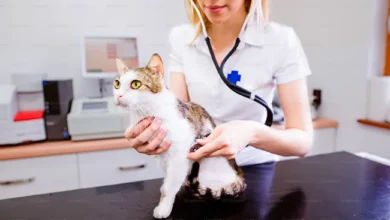
Most dog owners want the best for their furry relatives. As a result, they’ll provide their dogs with the best meals and affection for their physiological and emotional health. But one aspect that is often neglected: accidents and unforeseen medical emergencies.
For that reason, dog care providers have responded by introducing health insurance policies for dogs. Buying dog health insurance for your dog may be a bit overwhelming. This is because there are lots of clauses, exceptions, provisions, and “fine prints” that make it a bit difficult to relate to their policies. So what do you look out for when you want to buy a dog health insurance policy for your dog and what should you do after obtaining one for your dog?
1. Written Requirements
Certain requirements for coverage are kept in place by dog insurance providers. For instance, an insurance provider will require written documentation for rendered services when filing for claims. A dog insurance policy should explicitly define the requirements that a policyholder should know.
2. Co-pay
Co-pay is the fixed amount that a policyholder will have to pay for a certain procedure, irrespective of the fact that the insurance may already have it covered. They are normally estimated as a percentage of health costs. The co-pays of most companies range between 10% and 30%. Although, some companies can offer an amount that is above or below that.
3. Deductible Preferences
A deductible is a sum that a policyholder needs to pay to his insurer to make his insurance effective. To put it simply, if the overall cost is $500 and the sum of the deductible is $200, the insurance company will pay $300 while the policyholder will be required to pay $200. Premium charges will partly depend on the price of the deductible, although their relationship is inverse.
4. Exclusions
There are some services that dog insurance policies will not cover. Congenital and hereditary conditions are some coverage that is normally not covered. Certain dog insurance also makes exclusions for some certain breeds, like refusing to cover Pit Bull Terriers or Dalmatians.
5. Payout Limits
Payout limits are of three types: per-incident limit, period limit, and lifetime payout limit. The per-incident fixes the mark of the amount that a policy ought to pay for each incident covered. The period limit requires the insurance provider to payout for a particular period, say annually. The lifetime payout limit implies that the insurance provider will only cater to a particular amount during the lifetime of the dog.
6. Policy Coverage
Policy coverage defines what an insurance policy will provide for. On a general note, it helps make up for unexpected but significant vet bills. The actual sum of coverage and what is not captured in the coverage is contingent on the particular policy.
7. Promptness of Claim Payment
Because most dog insurance plans expect the insured to pay first and get paid back later, it’s very essential to ease up the processing of a claim to submit a repayment check. One or two weeks after the policy is completed, most dog insurers send out reimbursements. For all claims, some businesses need detailed paperwork, which may prolong the process.
Eight Things that You Should Know About Dog Insurance
-
Get Your Dog Insurance Policy As Fast As Possible
Many insurance providers are beginning to phase older dogs out of their broad veterinary coverage. On a general scale, these insurance providers will not cover for already existing health conditions. Hence, when you Kitty or Fido develops a health challenge, it may be a bit late to opt for a plan that will cater for treatment and diagnosis.
-
Illness and Accident Coverage is more Sensible
It is rather a great choice to opt for a coverage that’ll cater for illnesses and accidents if you are considering getting a dog health insurance policy for your dog. It is completely sensible to know that it is only a matter of time before your dog faces any of these. Hence, it is a wise choice to set some budgets aside for this.
-
Study the History of Your Dog
Get busy investigating your dog and check to see if it has any potentialities of developing genetic illnesses or conditions. If it has any likelihood of developing these diseases at a later point in its life, then ensure that your insurance provider covers all of these
-
Comprehend the Fine Print
Coming to terms with the fine prints is an especially important step for those conditions that get covered. Does your insurance provider cover the costs of veterinary hospital visits, prescription medications, diagnosis and treatment? There are different clauses in many insurance policies. Hence, it is important to understand the scope of their coverage before opting for them. If you don’t do this, there is a great chance that you’ll be confused about what is captured in the agreement that you entered with your insurance provider.
-
Your Dog’s Age
It is tough to obtain a pet insurance policy for aged dogs. That’s because it’s more probable that an elderly dog will develop symptoms of an illness faster than a younger one would do.
If your dog is less than 8 or 9 years old, or relatively young for some particular varieties, some insurance providers will allow you to obtain a policy change for it.
Buying a life-long policy when your dog is youthful is the simplest way to obtain an insurance policy for it. While this is undoubtedly not the least expensive alternative, it ensures that your dog is often protected.
-
Previously Existing conditions
When attempting to obtain health coverage for your dog, you must state any previously existing conditions, or else the policy may be invalid. If your dog has a previously existing condition, you may find a provider that will cover your dog. There is a high chance, however, that you won’t get any protection for a previously established medical condition.
-
Policy Switching
The policies about previously existing medical conditions make it harder to switch policies. The primary reason you would like to switch if you’re on a lifetime or annual policy will be because your payment has risen.
But then, your fee will only rise when you make a claim. If you have one this, it may be pretty hard to get another insurance provider that will take care of your dog’s insurance.



